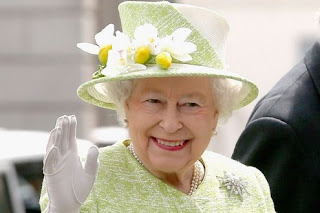Queen to honour Sri Lankan dedicated to changing lives
http://www.thesundayleader.lk/2017/12/05/queen-to-honour-sri-lankan-dedicated-to-changing-lives/
The Queen’s Young Leaders programme revealed that Bhagya Wijayawardane from Sri Lanka has been chosen as one of the final ever Queen’s Young Leaders Award winners in recognition of the lead she is taking in her community to change lives.
The prestigious Awards programme, now in its fourth and final year, celebrates exceptional young people aged 18 to 29 from across the Commonwealth and the work they are undertaking to improve lives across a diverse range of issues, from supporting people living with mental health problems, helping children to receive a quality education, to promoting gender equality.
Bhagya will now join the Queen’s Young Leaders network of 240 Award winners, a unique community of influential change-makers, who represent all 52 Commonwealth countries. The winners announced today will receive their Award from Her Majesty The Queen at a special ceremony at Buckingham Palace in London, UK, next year.
Bhagya has been chosen in recognition of the work she is doing to educate people on how to grow their own food and to promote food security.
Bhagya Wijayawardane, aged 28, said: “I am pleased to receive a Queen’s Young Leaders Award. It’s such an honour to become a part of this amazing group of young people who are making a difference in their communities, and have a great opportunity right now to be the generation that turn things around. We have no choice but to act to mitigate climate change and address food insecurity issues. I’m only one small part of this solution, but I will do all I can to do my part. Awards like this should inspire others to do the same.”
Dr Astrid Bonfield CBE, Chief Executive of The Queen Elizabeth Diamond Jubilee Trust, said: “In this, the final year of The Queen’s Young Leaders programme, once again we have outstanding Award winners, leading the way in transforming people’s lives for the better in every part of the Commonwealth. We congratulate them all for their remarkable achievements. Over the coming year the programme will nurture and develop their talents, and equip them to go further in making a lasting change in their communities. I hope they find the experience to be truly life-changing and I’m delighted to welcome today’s winners to the now complete network of Queen’s Young Leaders.”
The Queen’s Young Leaders programme was established in 2014 by The Queen Elizabeth Diamond Jubilee Trust in partnership with Comic Relief, The Royal Commonwealth Society and the University of Cambridge’s Institute of Continuing Education, in recognition of The Queen’s lifetime of service to the Commonwealth.
The Queen’s Young Leaders Award winners receive bespoke training, mentoring and networking opportunities, and take part in a residential programme in the UK, to help them build on the work they are leading in their communities. They join a now complete network of Award winners and, in tribute to Her Majesty The Queen’s lifetime of Service, will continue to connect and collaborate and change lives for years to come.
To see a full list of Award winners and highly commended runners up, and to read more about their inspirational stories, please visit www.queensyoungleaders.com.


Comments
Post a Comment